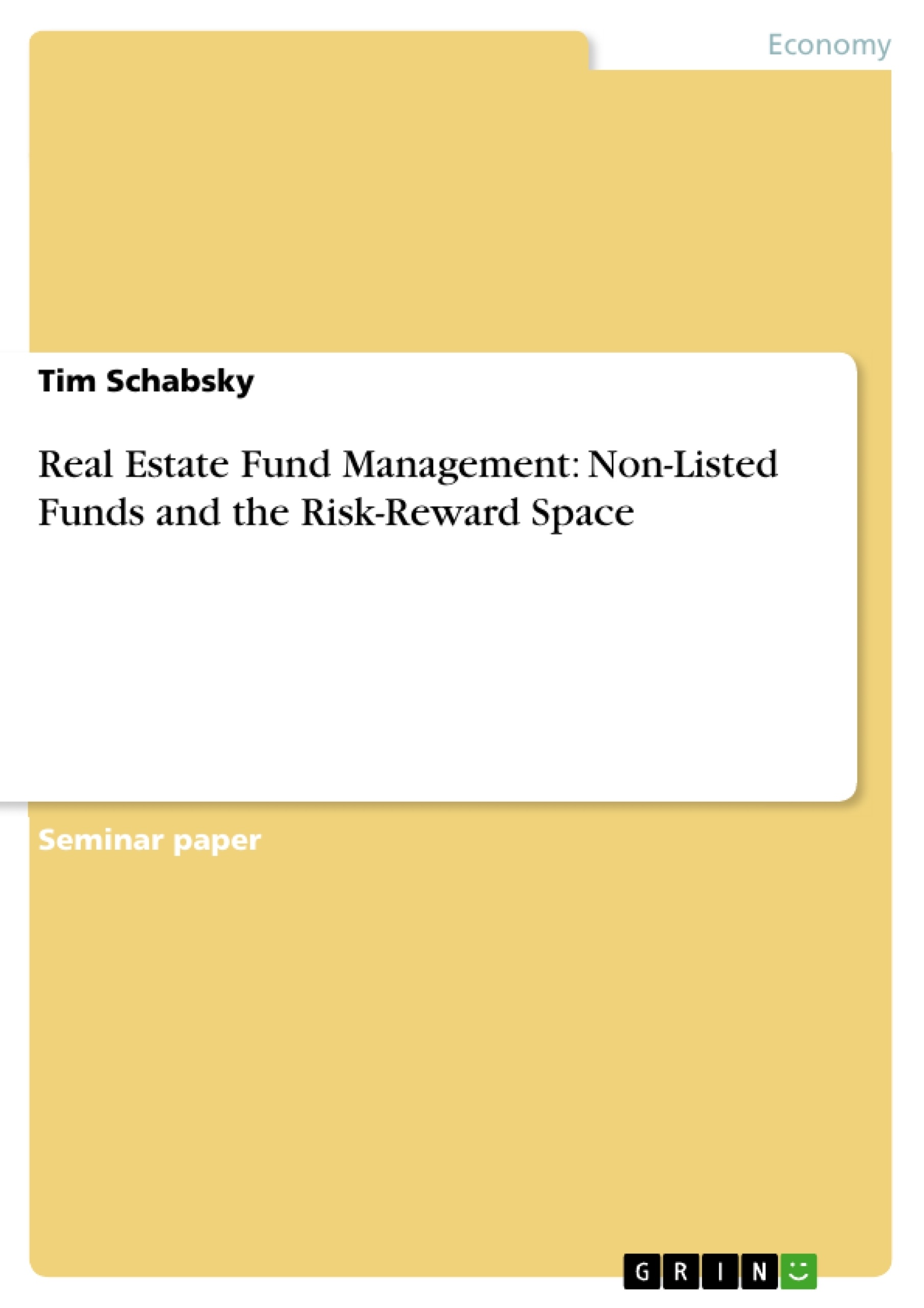This essay examines the ability of investors to take desired positions in the risk-reward space by building a portfolio of non-listed funds of different investment styles. The question is examined from the viewpoint of a major institutional investor not subject to meaningful capital constraints. While it is acknowledged that there might be significant practical barriers when implementing the desired portfolio strategy, the essay focuses on the basic theoretical viability. The latest research on non-listed property fund performance was drawn upon. Furthermore, data from the Association of Real Estate Funds (AREV), the European Association for Investors in Non-Listed Real Estate Vehicles (INREV) and the Investment Property Databank (IPD) was used for illustrative purposes. To begin with, a brief introduction to non-listed funds and the concept of risk and reward is given. Subsequently, the methodologies applied by AREF and INREV to classify non-listed property funds are illustrated. Thereafter, the historic performance achieved by different styles is discussed. Then, factors determining the INREV style classifications are compared with the performance drivers identified by recent research. The findings are summarized in the last section.
Inhaltsverzeichnis (Table of Contents)
- Introduction
- Non-listed real estate funds and the risk-reward space
- Classification of non-listed real estate funds: AREF and INREV
- Non-listed real estate fund performance and INREV style classification
- Drivers of property fund risk and returns
- Conclusion
Zielsetzung und Themenschwerpunkte (Objectives and Key Themes)
This essay explores the potential for investors to construct portfolios of non-listed real estate funds with diverse investment styles, enabling them to achieve their desired risk-return profile. The analysis adopts the perspective of a major institutional investor without significant capital constraints. While acknowledging potential practical hurdles in implementing such a strategy, the focus remains on its theoretical feasibility. The study draws upon recent research on non-listed property fund performance, utilizing data from the Association of Real Estate Funds (AREV), the European Association for Investors in Non-Listed Real Estate Vehicles (INREV), and the Investment Property Databank (IPD) for illustrative purposes.
- Risk and return characteristics of non-listed real estate funds
- Classification of non-listed real estate funds by AREF and INREV
- Historical performance of different investment styles
- Factors influencing fund risk and returns
- Portfolio construction and diversification in real estate
Zusammenfassung der Kapitel (Chapter Summaries)
- Introduction: This chapter provides an overview of the essay's objectives and scope. It introduces the concept of non-listed real estate funds and their role in the risk-reward space.
- Non-listed real estate funds and the risk-reward space: This section defines non-listed real estate funds, differentiating between closed-ended and open-ended structures. It explains the fundamental relationship between risk and expected return for investors in non-listed property funds, highlighting the importance of portfolio diversification.
- Classification of non-listed real estate funds: AREF and INREV: This chapter presents the methodologies used by the Association of Real Estate Funds (AREF) and the European Association for Investors in Non-Listed Real Estate Vehicles (INREV) to categorize non-listed real estate funds. It describes the AREF fund categorization, including balanced, long income, and specialist funds, and illustrates the risk-return characteristics of different fund styles.
- Non-listed real estate fund performance and INREV style classification: This section discusses INREV's classification system for non-listed real estate funds based on investment styles, emphasizing the determinants of style, such as target internal rate of return (IRR) and leverage. It explores the historical performance of different INREV investment styles, highlighting the relationship between style, risk, and return.
Schlüsselwörter (Keywords)
The primary keywords and focus topics include non-listed real estate funds, risk-return space, investment styles, portfolio diversification, AREF, INREV, IRR, leverage, and property fund performance. The essay analyzes the relationship between different fund styles and their performance, considering factors such as expected return, risk premium, and correlation among asset returns.
- Citar trabajo
- Tim Schabsky (Autor), 2013, Real Estate Fund Management: Non-Listed Funds and the Risk-Reward Space, Múnich, GRIN Verlag, https://www.grin.com/document/231341



